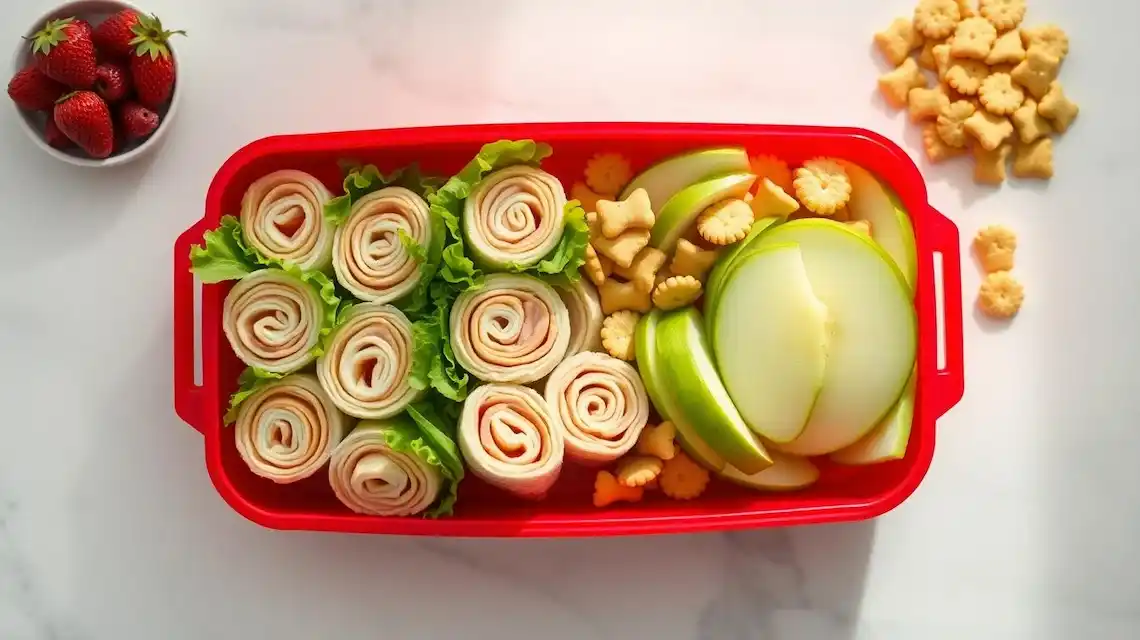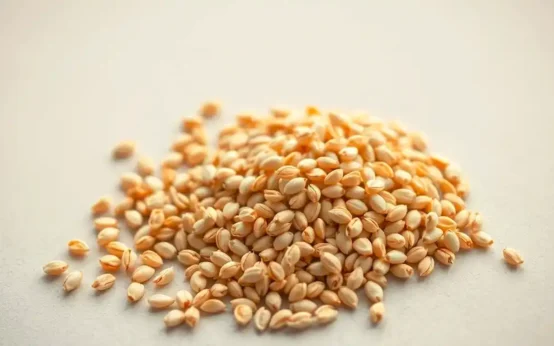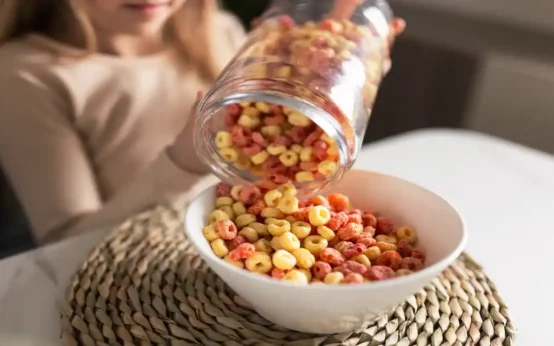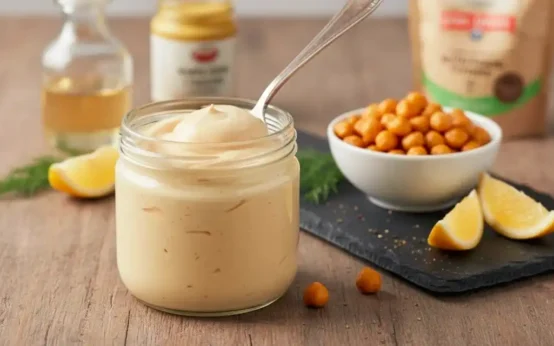Packing a healthy lunch box for school does more than just fill your child’s stomach, it helps them stay focused, energized, and ready to learn. With the right mix of fresh foods, you can boost their mood and support steady growth all day. This guide will show you how to make lunch box for school that’s easy, balanced, and something kids actually want to eat. Get smart strategies for creating lunches that make both parents and kids happy.
Understanding the Basics of a Balanced School Lunch Box
When you learn how to make lunch box for school, it’s all about getting balance and variety into each bite. A lunch box that hits the right nutritional notes not only powers your child through the afternoon, it also helps them build lifelong healthy habits. Let’s break down what goes into a lunch box that keeps kids full, focused, and happy.
Essential Components for Nutrition
A truly balanced school lunch has a mix of different food groups. Aim for color, texture, and enough variety to keep things interesting. Here’s what every lunch box should include:
- Protein: Keeps muscles strong, repairs tissue, and helps your child feel full longer. Add lean chicken, boiled eggs, beans, cheese, or even yogurt. If you want to learn more about the signals your child might need more protein, check out these early signs you need more protein.
- Carbohydrates: These are the body’s main source of energy, especially important for brainpower. Toss in whole-grain bread, wraps, rice, or pasta.
- Healthy Fats: Support growing brains and fuel active kids. Think avocado slices, a small handful of nuts (if your school allows), or a drizzle of olive oil on veggies.
- Fruits: Fresh, dried, or pureed—fruits give a sweet burst of vitamins and keep things interesting.
- Vegetables: Crunchy baby carrots, cherry tomatoes, cucumber slices, or steamed broccoli pack a punch for fiber and nutrients.
Mixing these food groups ensures your child isn’t just eating, but thriving throughout their busy day.
Proper Portion Sizes for Different Age Groups
Serving the right portions is key when deciding how to make lunch box for school. Kids’ appetites can shift with growth spurts, but there are some easy guidelines you can start with.
- Ages 4-7: Small hands, small stomachs. Use your child’s palm or fist as a guide for protein and grains, and aim for a variety of finger-friendly fruits and veggies.
- Ages 8-12: Portions get a little bigger. Think about increasing protein and grains to match their growing energy needs. Add an extra scoop of veggies or slice of fruit.
- Teens: Teens often need the largest portions. Include more protein, lots of veggies, whole grains, and a healthy fat—plus snacks to cover after-school hunger.
If you’re looking to add variety or easy plant-based options, vegetarian ideas can keep lunch boxes fresh. See this list of quick vegetarian Rrecipes for time-saving inspiration.
Food Safety Tips for School Lunches
A lunch box doesn’t just need to be healthy, it needs to be safe to eat. Start with a clean box, fresh ingredients, and the right storage solutions.
- Cold Foods: Use a small ice pack to keep yogurt, cheese, or deli meats cool until lunchtime.
- Hot Foods: Insulated food jars work great for soups or leftovers. Heat the food well before packing.
- Hand Washing: Always have kids wash their hands before eating, even on school trips.
- Sturdy Containers: Choose leak-proof boxes and avoid packing foods that might spoil or get mushy.
- Allergen Awareness: Double-check with school policies if you’re packing nuts or common allergens. Let teachers know if your child has any allergies too.
Safe storage and preparation help your child open their lunch box to something fresh, tasty, and safe every day.
Step-by-Step Guide: How to Make Lunch Box for School
Packing a lunch box for school doesn’t have to be stressful. A little planning and prep can turn a busy morning into a breeze. Here’s a practical, easy-to-follow guide that covers everything from menu ideas to storage tips and speedy packing solutions. With these steps, you’ll know exactly how to make lunch box for school that stays fresh, appealing, and healthy.
Planning Healthy and Tasty Menus
Menu planning is the secret to fuss-free mornings and satisfied kids. Start with simple combinations and let your child be part of the choices. This keeps things interesting and helps avoid food waste.
- Rotate Proteins: Chicken, turkey, beans, boiled eggs, or cheese give reliable energy. For plant-based families, consider options like hummus, tofu cubes, or nut butters (if allowed).
- Add Color with Produce: Mix up the fruits and veggies. Think carrot sticks with grapes on Monday, cucumber slices with apple wedges on Tuesday.
- Whole Grains Matter: Choose whole wheat bread, brown rice, or whole grain pasta for added fiber.
- Pack Variety: Keep lunch boxes exciting by rotating snacks. Homemade energy balls, mini pita pockets, or a mix of cut fruit add a fresh touch.
- Balance Nutrition: Each box should have protein, grain, fruit, vegetable, and a healthy fat. This covers both taste and balanced eating.
- Involve Your Child: Let kids pick fruit or snacks for the week. Even small choices can make them more likely to eat what you pack.
If you’re focusing on adding more plant-based proteins for variety, these plant-based protein sources can help round out your menus and snack lists.
Food Prep and Storage Strategies
Good prep habits can save you precious morning minutes and keep foods safe and delicious until lunchtime. Think of the prep steps as your backstage crew, making sure every meal is ready to shine.
- Batch Chop Veggies: Wash and cut vegetables in advance. Store them in airtight containers, making it easy to add a handful to any lunch box.
- Fruit Prep: Peel and slice fruit like oranges or melons ahead of time. To keep apples from browning, dip slices in lemon water before packing.
- Main Dish Extras: Double recipes for dinners that also make great lunches, like baked chicken or pasta salad. Store single servings in separate containers so you can grab and go.
- Pack the Night Before: Stack cooled thermoses, filled water bottles, and packed containers in the fridge overnight.
- Keep Foods Fresh: Invest in a good lunch box and easy-open containers. Use ice packs for yogurt, cheese, or meats to keep everything safe.
- Label and Organize: Simple labels (even sticky notes!) help kids remember what’s inside, making lunch more appealing and less confusing.
These habits reduce stress and make the whole process smoother, so you’re not scrambling when the bell’s about to ring.
Tips for Speedy Packing in the Morning
Streamline your routine with organized packing strategies. The key is setting up the kitchen so everything you need is at your fingertips.
- Create a Lunch Drawer: Dedicate a drawer or basket for lunch containers, napkins, and reusable utensils.
- Stock Up on Staples: Always keep a stash of whole grain wraps, cheese sticks, and sliced deli meats or cooked proteins ready to pack.
- Pre-portion Snacks: Bag up grapes, crackers, or carrots in single servings over the weekend. Grab-and-go snacks speed up your morning routine and help keep portions just right.
- Stay Organized: Use a checklist or simple menu board to remember what needs to go in each lunch. This cuts down last-minute decisions and forgotten items.
- Set a Routine: Make lunch packing the first step after breakfast so you don’t run out of time.
- Teach Kids to Help: Even young kids can add fruit or pack their napkins. Older children can take charge of assembling their own lunch boxes with your guidance.
Sticking with these routines will help your mornings run smoother and keep everyone fed, fueled, and ready for the day ahead.
Creative Ideas and Solutions for Fussy Eaters
Even the best lunch box ideas can fall flat when dealing with picky eaters. Kids can latch onto food routines—or aversions—and it becomes a daily challenge to keep things fresh and appealing. If you want to know how to make lunch box for school that kids will actually eat, thinking creatively is key. Layer in variety, make lunches look fun, and find solutions for allergies and dietary needs.
Smart Swaps for Allergies and Dietary Restrictions
Food allergies or sensitivities shouldn’t get in the way of delicious school lunches. Small changes can make your child’s meal safe and satisfying, and no one has to feel left out at the lunch table. Here’s how to handle typical restrictions:
- Nut-Free: Swap peanut butter for seed butters like sunflower or pumpkin seed spread. Cream cheese with sliced fruit on whole grain bread can work well.
- Gluten-Free: Many stores now carry gluten-free wraps, crackers, and bread. For variety, use lettuce leaves to wrap fillings or offer rice cakes with toppings.
- Dairy-Free: Pack plant-based yogurts, coconut cheese slices, or hummus for dip. Choose fruits and veggies that pair well with non-dairy options.
- Vegetarian/Vegan: Beans, roasted chickpeas, edamame, and grilled tofu make great protein sources. Add a handful of dried fruits or seeds for extra flavor.
Small swaps and advance planning make it easier to build balanced, allergy-friendly meals that don’t feel like an afterthought. Always check labels and talk to your child’s teacher, so everyone’s on the same page.
Fun Presentation and Themed Lunches
The way food looks can help picky eaters overcome their hesitation. Sometimes, a playful nudge is all it takes to make a new flavor or veggie feel less intimidating.
Start by thinking like a kid: color, shape, and a little surprise can work wonders. Here are ways to make lunch boxes more inviting:
- Bento Box Style: Separate foods into bite-sized, colorful sections. Use silicone cups for little piles of fruit, cheese, or crackers.
- Shapes and Cutters: Use cookie cutters to shape sandwiches or serve cheese and veggies as stars, hearts, or animals.
- Colorful Picks and Sticks: Skewer grapes, cheese cubes, or cherry tomatoes. Food picks turn regular bites into something special.
- Rainbow Meals: Pack vegetables and fruit in every color for a “rainbow challenge.” Offer a reward if your child tries each one.
- Surprise Notes: Slip in a fun joke or a tiny drawing to give lunchtime a personal touch.
For themed lunches, think about making it “Taco Tuesday” with a DIY taco kit, or “Breakfast for Lunch” with mini pancakes, syrup, and berries. On holidays, match colors and shapes to the occasion, green foods for St. Patrick’s Day or heart-shaped sandwiches for Valentine’s. Kids notice when you put in this extra bit of fun, and they’re more likely to taste (and finish) their meals.
When learning how to make lunch box for school work for even the fussiest eaters, creativity is your best tool. Variety, surprise, and a touch of fun can turn lunchtime from a daily standoff into a meal your child looks forward to.
Conclusion
Building a routine for how to make lunch box for school gives your child steady energy for learning, play, and growth. A mix of proteins, grains, fruits, veggies, and healthy fats helps fuel their day and supports healthy habits. When you add simple meal prep and keep menus creative, you make lunchtime both easier and more exciting.
Keep exploring what foods work best for your child’s tastes and needs. Try new combinations and let your child join in the planning when possible. With these practical steps, you’re setting your child up for a brighter, more focused school day.
FAQ:
What should I pack in a school lunch box?
Aim for balance. Include a protein (chicken, beans, cheese), a grain (bread, pasta, rice), fresh fruit or veggies, and a small treat or snack. Add a drink like water or milk.
How do I keep food fresh until lunchtime?
Pack cold foods with an ice pack or frozen water bottle. Use an insulated lunch bag. Keep hot foods in a thermos and preheat it with hot water before adding the food.
Can I pack leftovers from dinner?
Yes, as long as you store them safely and use them within a day or two. Warm foods should go in a thermos, and cold items need an ice pack.
What are some easy lunch ideas for picky eaters?
Try build-your-own lunches like wraps, crackers with cheese and meat, or yogurt with fruit and granola. Include something familiar along with one new food.
How do I avoid soggy sandwiches?
Pack wet ingredients (like tomatoes or pickles) in a small container and let your child add them at lunchtime. Use spreads like butter to protect bread from moisture.
Are there good nut-free options?
Yes. Use hummus, sunbutter, sliced meats, cheese, seeds, or beans. Many schools have nut restrictions, so check your school’s rules before packing.
How early can I prep lunches?
You can prep most lunches the night before and refrigerate them. Chopped fruits or veggies will stay fresh for a few days in sealed containers.
How do I get my child to eat more veggies?
Cut veggies into bite-size pieces or fun shapes. Include dips like hummus or ranch. Let your child help pick or pack the veggies they want.
What if my child’s lunch comes home uneaten?
Ask your child what they liked and didn’t like. Try smaller portions or different foods. Check if there’s enough time to eat or if distractions are a problem.
How do I save time on busy mornings?
Pack lunches the night before. Keep a list of easy meal ideas. Store lunch items in a spot that’s easy to grab and go. Let older kids help pack their own.
Can I pack the same lunch every day?
You can, but try to mix in new foods for variety and nutrition. Even small changes like swapping fruit or bread can keep things interesting.
How much food should I pack?
You know your child’s appetite best. Younger kids often need less than you think. Start with small portions and adjust based on what comes home.



 Importance of Hydration for Your Brain, Body, and Everyday Energy
Importance of Hydration for Your Brain, Body, and Everyday Energy  Health Benefit of Sesame Seed
Health Benefit of Sesame Seed  Healthiest Breakfast Cereal for Children
Healthiest Breakfast Cereal for Children  Anxiety Management Techniques
Anxiety Management Techniques  Vegan Oil Free Mayonnaise Recipe
Vegan Oil Free Mayonnaise Recipe  What Makes Fat in Our Body?
What Makes Fat in Our Body?